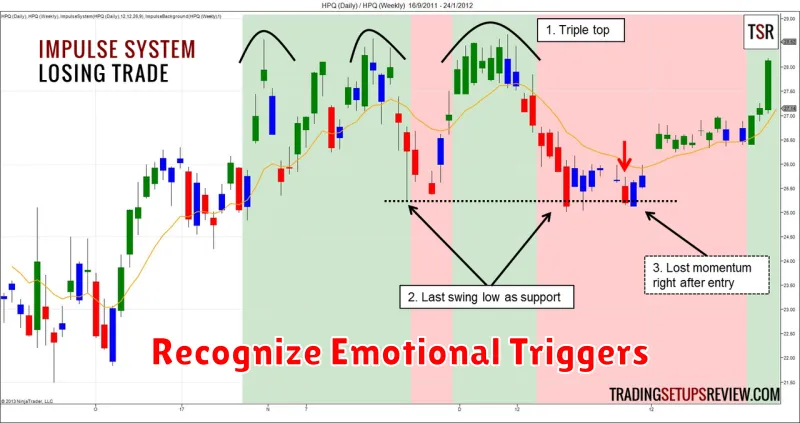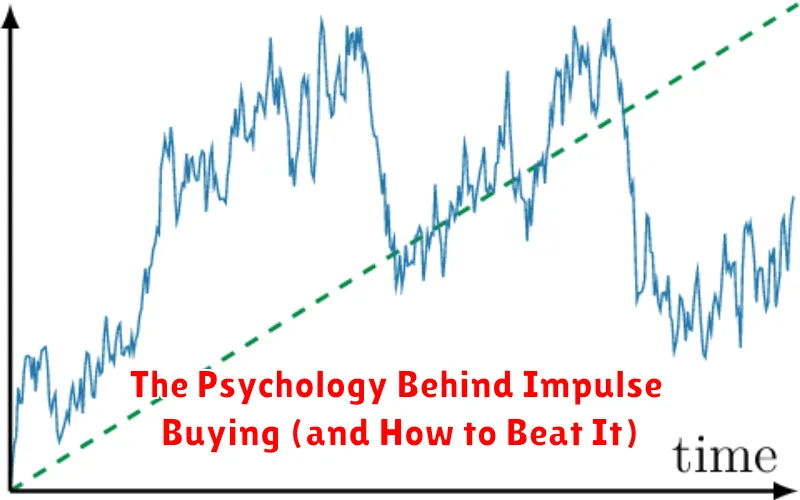Do you find yourself regularly making impulse purchases? Are you struggling to understand why you buy things you don’t need, despite knowing it’s financially detrimental? You’re not alone. Impulse buying is a common behavioral pattern fueled by a complex interplay of psychological factors. This article delves into the fascinating psychology behind impulse buying, exploring the cognitive biases, emotional triggers, and marketing tactics that contribute to this widespread phenomenon. Understanding these underlying mechanisms is the first step towards gaining control over your spending and breaking free from the cycle of regrettable purchases.
We will examine various strategies to curb impulse buying, offering practical techniques to improve your financial well-being. Learn how to identify your personal triggers, develop effective coping mechanisms, and implement budgeting techniques that promote mindful spending. Discover the power of delayed gratification, the importance of setting financial goals, and the benefits of cultivating a healthy relationship with money. This guide will equip you with the knowledge and tools you need to overcome impulse buying and achieve greater financial stability.
Understand Why We Buy Without Thinking
Impulse buying, the act of purchasing something without prior planning or consideration, is a pervasive phenomenon driven by a complex interplay of psychological factors. Understanding these underlying mechanisms is crucial to both marketers and consumers alike.
One key driver is the emotional aspect of decision-making. Our brains are wired to prioritize immediate gratification, often overriding rational thought processes. This is particularly true when we experience positive emotions such as excitement, happiness, or even relief. A sale, a limited-time offer, or simply a visually appealing product can trigger these feelings, leading us to buy without fully assessing the need or value.
Conversely, negative emotions such as stress, anxiety, or boredom can also fuel impulse purchases. These feelings can create a desire for instant comfort or escape, prompting us to seek solace in material goods. This is often seen in impulsive purchases of comfort food, retail therapy sprees, or other non-essential items.
Environmental cues play a significant role. Retail environments are meticulously designed to stimulate impulsive behavior. Strategic product placement, enticing displays, and pleasant ambient music all contribute to creating an atmosphere that encourages spending. The use of promotions and discounts further manipulates our perception of value, making us more susceptible to unplanned purchases.
Finally, our cognitive biases can significantly impact our impulse control. For instance, the anchoring bias – our tendency to rely heavily on the first piece of information we receive – can influence our perception of price. Similarly, the availability heuristic leads us to overestimate the likelihood of events that are easily recalled, making us more likely to buy things that are readily available or prominently displayed.
Understanding these psychological triggers is the first step towards gaining control over our spending habits and making more informed purchasing decisions.
Recognize Emotional Triggers

Impulse buying is rarely a purely rational decision; it’s heavily influenced by emotional triggers. Understanding these triggers is the first step towards controlling your spending habits. These triggers can vary significantly from person to person, but some common ones include stress, sadness, boredom, and loneliness.
Think about your own spending habits. When are you most likely to make impulsive purchases? Are you more prone to buying things when you’re feeling overwhelmed at work, or perhaps when you’re feeling down and seeking a mood boost? Identifying these situations and the associated emotions is crucial. Keeping a spending journal can be incredibly helpful in this process. Note down your purchases, the amount spent, and most importantly, how you were feeling at the time of purchase.
Another significant emotional trigger is the feeling of missing out (FOMO), often fueled by social media. Seeing others enjoy a new product or experience can ignite a desire to acquire it yourself, even if it’s not something you truly need. Recognizing this tendency and actively challenging the urge to keep up with others is vital in curbing impulse buying.
Beyond specific emotions, environmental factors can also act as triggers. A cluttered store layout, enticing displays, or even the pleasant smell of freshly baked goods in a supermarket can all subconsciously influence your buying decisions. Being mindful of your surroundings and resisting the temptation of these persuasive tactics is key to maintaining control.
Finally, understanding the connection between self-esteem and impulse buying is important. Sometimes, purchases are driven by a desire to compensate for feelings of inadequacy or to boost self-worth. Instead of resorting to material possessions for emotional gratification, explore healthier coping mechanisms such as exercise, meditation, or spending time with loved ones. Addressing the root cause of these feelings is far more effective in the long run.
Delay Gratification With a Time Rule
Impulse buying often stems from a lack of self-control and an inability to delay gratification. A powerful technique to combat this is implementing a “time rule.” This involves establishing a mandatory waiting period before making any non-essential purchase.
The length of this waiting period can be tailored to your individual needs and the cost of the item. For smaller purchases, a 24-hour rule might suffice. This gives you time to cool off, re-evaluate the need for the item, and potentially discover you no longer desire it.
For larger purchases, extending the waiting period to 72 hours or even a week can be highly beneficial. This longer timeframe allows for more thorough consideration of the purchase’s impact on your budget and long-term financial goals. It also gives you time to research alternatives and potentially find a better deal.
During this waiting period, actively engage in other activities to distract yourself from the desired purchase. This could involve focusing on work, spending time with loved ones, or pursuing a hobby. By shifting your focus, you reduce the emotional intensity surrounding the impulse and make a more rational decision.
Implementing a time rule requires discipline and commitment. It’s crucial to stick to the waiting period, regardless of how much you want the item. This consistency reinforces your self-control and gradually reduces your susceptibility to impulse buying.
The time rule is a simple yet effective strategy for gaining control over spending habits and building stronger financial discipline. By consciously delaying gratification, you significantly increase the likelihood of making thoughtful and financially responsible purchases.
Use a ‘Wishlist First’ Strategy
Impulse buying, that spontaneous urge to purchase items we don’t truly need, often stems from a lack of planning and a disconnect between our desires and our budget. A powerful antidote to this is employing a ‘wishlist first’ strategy. This involves consciously creating a running list of items you genuinely want, rather than immediately buying them on a whim.
The benefit of this approach is multifaceted. Firstly, it introduces a crucial element of deliberation. By writing down your desires, you give yourself time to reflect on whether the item truly aligns with your needs and long-term goals. This pause often reveals that the initial urge was fleeting and not a reflection of genuine necessity.
Secondly, a wishlist fosters a sense of control. Instead of feeling swept away by impulsive cravings, you are actively managing your spending. This control can be immensely satisfying and helps you avoid the post-purchase regret that often accompanies unplanned purchases. You’ll find yourself making more informed decisions, leading to greater financial stability.
Finally, maintaining a wishlist allows you to prioritize your wants. By reviewing your list periodically, you can assess which items are truly important and allocate your resources accordingly. This thoughtful approach shifts your focus from fleeting desires to fulfilling long-term aspirations, ultimately leading to more satisfying purchases and a healthier relationship with spending.
Track Impulse Purchases Over Time

Understanding your impulse buying habits requires more than just acknowledging that you do it. To effectively combat impulsive spending, you need to actively monitor your behavior over time. This involves meticulously recording every unplanned purchase.
Start by creating a spreadsheet or using a budgeting app. Record the date, the item purchased, the amount spent, and, critically, the reason you bought it. Was it boredom? Stress? A perceived need? Identifying these triggers is a key step in breaking the cycle.
Tracking your impulse purchases over several weeks or even months allows you to identify patterns and trends. You might discover that you’re more prone to impulsive spending on certain days of the week, at specific times of the day, or when you’re feeling a particular emotion. This awareness provides invaluable insights into your personal spending triggers.
The data you collect isn’t just for passive observation. Once you have a clear picture of your spending habits, you can begin to develop strategies for mitigating future impulse buys. This might involve avoiding certain stores, setting spending limits, or employing other techniques discussed later in this article.
Regularly reviewing your tracked purchases will reinforce your understanding of your own behavior. It provides a visual representation of your progress and serves as a powerful reminder of the financial consequences of impulsive spending.
Replace Shopping With Positive Habits
Impulse buying, driven by emotional responses rather than rational need, can significantly impact our finances and well-being. To break free from this cycle, it’s crucial to replace the habit of shopping with healthier, more fulfilling alternatives. This requires a conscious effort to identify your triggers and cultivate new, positive routines.
Instead of turning to shopping to alleviate stress or boredom, consider engaging in activities that promote relaxation and self-care. This could involve mindfulness exercises such as meditation or yoga, spending time in nature, listening to calming music, or pursuing a creative hobby like painting or writing. These activities provide a sense of accomplishment and well-being without the negative consequences of excessive spending.
Another effective strategy is to cultivate a sense of gratitude. Taking time to appreciate what you already have can significantly reduce the urge to acquire more. Keeping a gratitude journal or simply reflecting on your blessings can foster contentment and diminish the appeal of impulsive purchases.
Developing strong financial habits is paramount. Creating a budget and tracking your spending can enhance awareness of your financial situation and help you make more informed decisions. Setting savings goals and regularly contributing towards them can also provide a sense of accomplishment and reduce the temptation to spend impulsively.
Finally, it’s vital to address the underlying emotional needs that fuel impulse buying. Identifying and acknowledging these emotions, whether stress, anxiety, or loneliness, is the first step towards finding healthier ways to cope. Seeking support from friends, family, or a therapist can provide valuable guidance and perspective.

